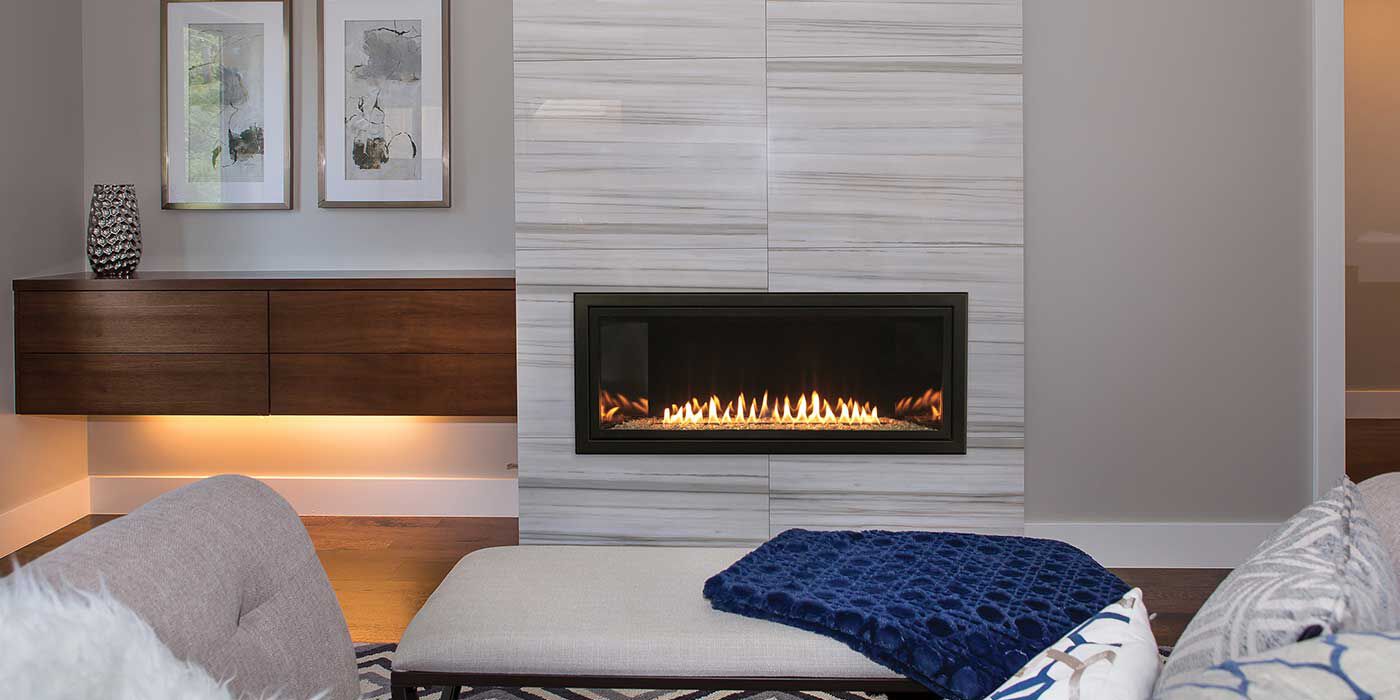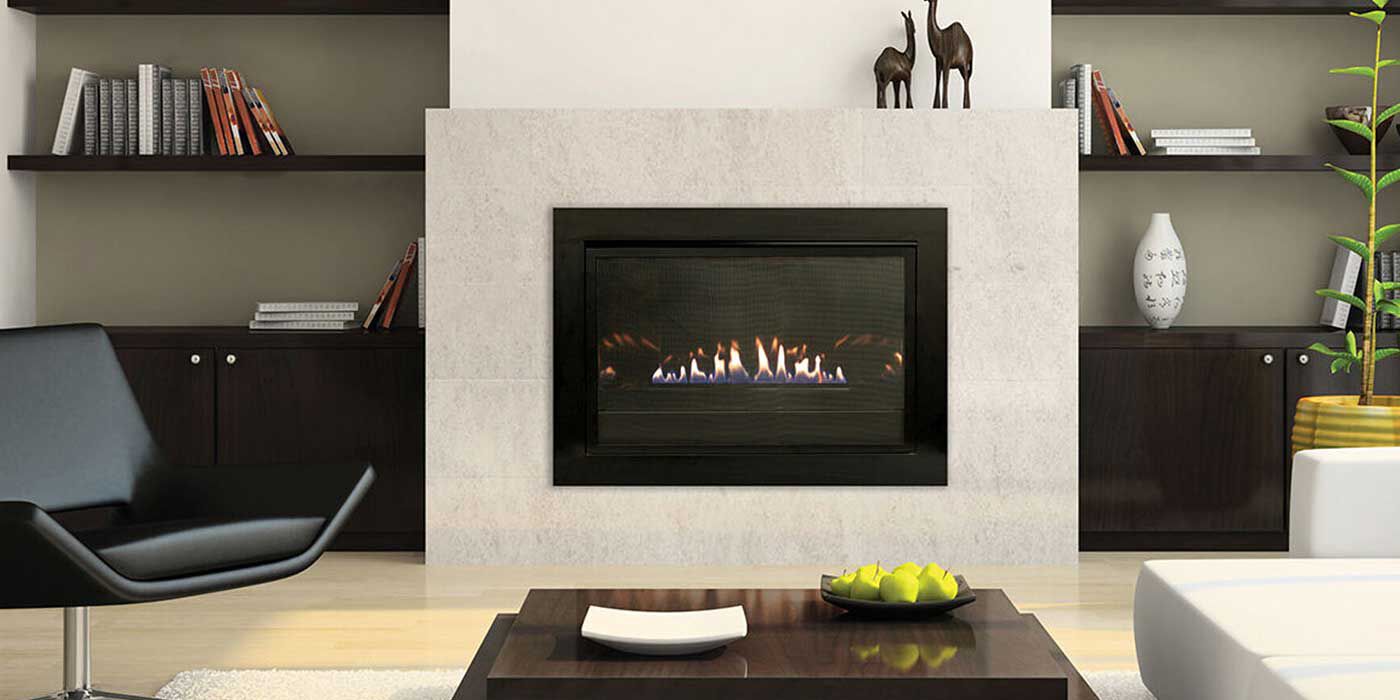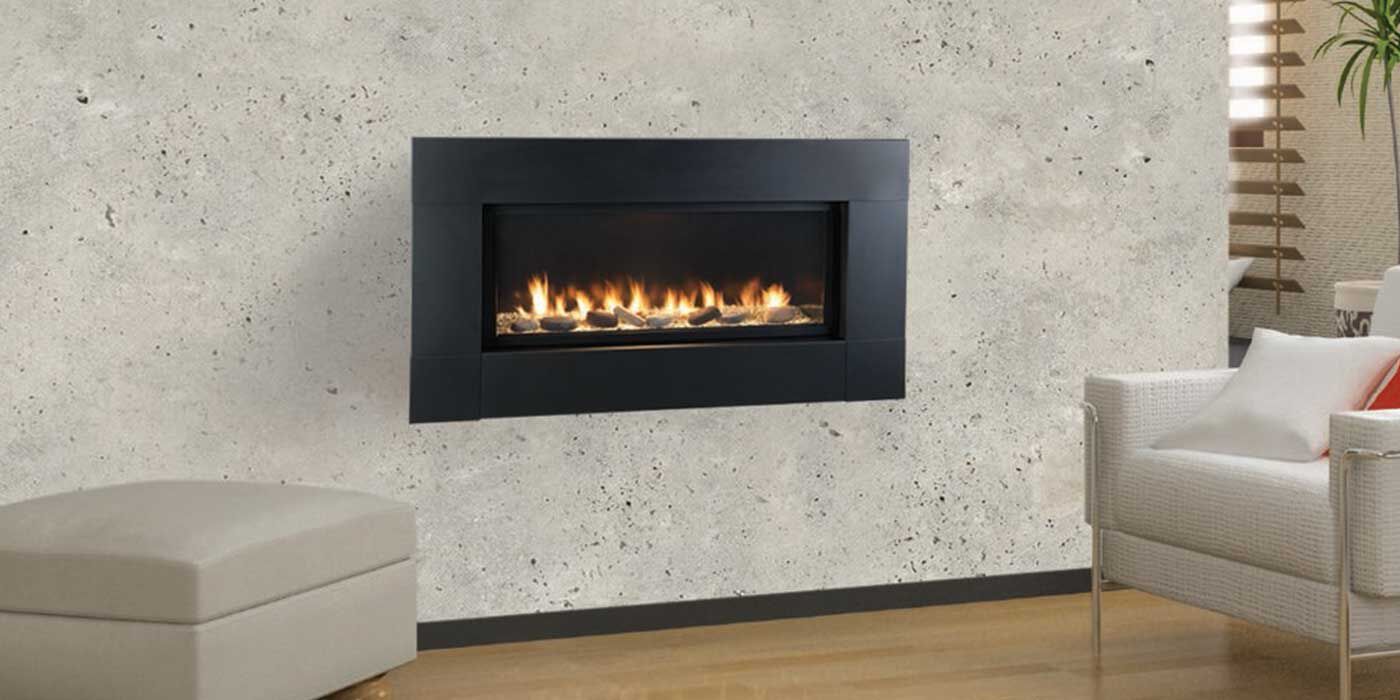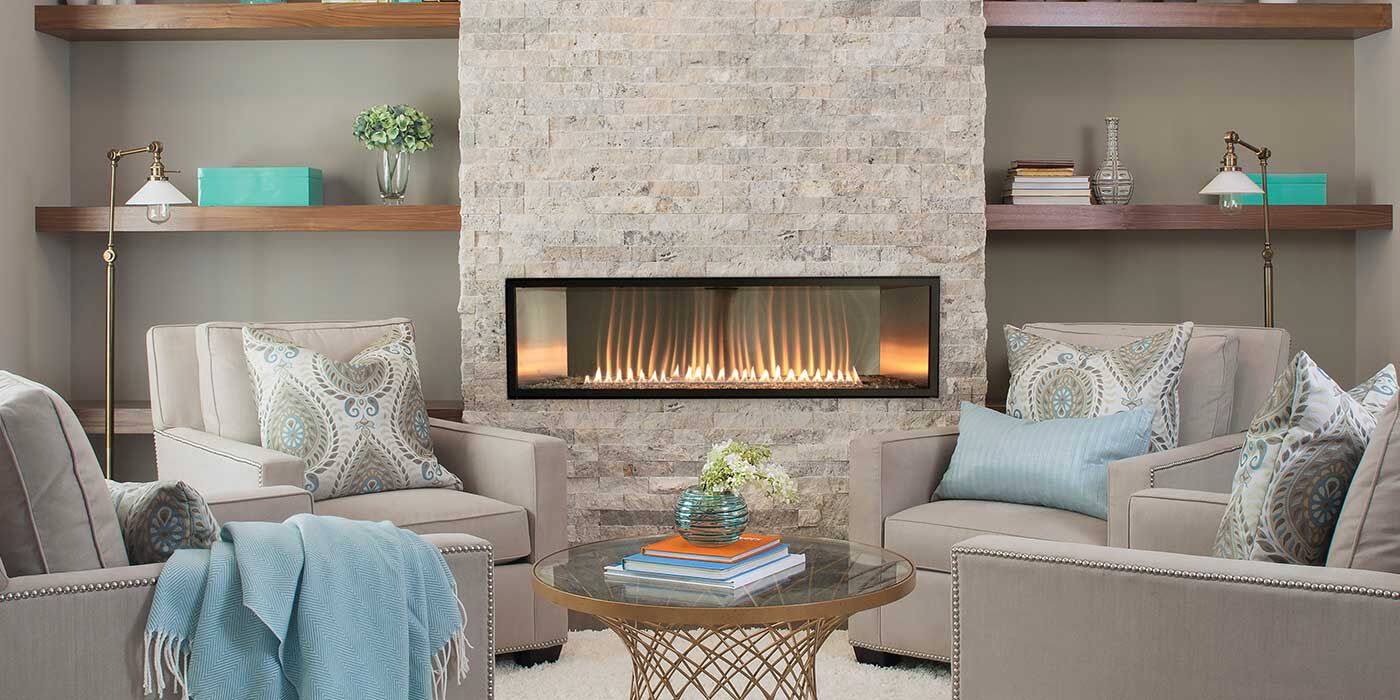By: Tom Regis, NFI Certified Master Hearth Professional
Last Updated: May 22, 2025
If you want to add a fireplace to your space but you don’t have a chimney, then an unvented gas fireplace is one of the best options.
Unvented gas fireplaces, also known as vent-free or ventless gas fireplaces, are an efficient and economical way to add more heat to your home, without the costs associated with a typical fireplace installation.
With no chimney or venting system, how exactly do unvented fireplaces work — and more importantly, are they safe to use? In this article, we’ll cover everything you need to know before installing one in your home.
How Do Unvented Gas Fireplaces Work?
Unvented gas fireplaces operate without a chimney, flue, or external venting system. They pull in air from inside your home and exhaust it back out as heat.
Designed to burn at almost 100% efficiency, unvented fireplaces won’t emit harmful gases or emissions. Any residual byproducts they produce will be within safe limits.
With no chimney or venting system to worry about, unvented fireplaces are often more affordable and straightforward to install than Direct Vent or masonry fireplaces.
Are Unvented Fireplaces Safe to Use?
When installed correctly, unvented fireplaces are considered very safe. They’re also equipped with safety systems that prevent poor air quality and reduce health risks.
Pros (Safety & Benefits):
✅ Oxygen Depletion Sensors (ODS): Required on all unvented units sold in the U.S., these sensors prevent operation in low-oxygen environments.
✅ Carbon Monoxide Emissions: In properly functioning units, CO levels are minimal and well within EPA guidelines.
✅ No Backdraft Risk: Unlike vented systems, all the heat produced by an unvented unit stays inside the room. There’s also no flue where gases could re-enter your home.
Cons (Potential Risks):
🚫 Indoor Air Quality: Even with clean combustion, unvented fireplaces release small amounts of carbon monoxide (CO), nitrogen dioxide (NO₂), and water vapor into your space.
🚫 Humidity and Mold: The water vapor produced can increase indoor humidity, potentially leading to condensation or mold growth.
🚫 Limited Usage: Most manufacturers and building codes recommend running an unvented fireplace for no more than 4 hours at a time and never while sleeping.
Pro Tip:
To reduce excess moisture, leave a window cracked near your fireplace.
Regulations and Building Codes
Unvented gas fireplaces are legal in many parts of the United States but are banned or restricted in some states and cities (e.g., California, New York City).
Always check with your local building authority before installing one.
Unvented Fireplace Safety Tips
If you decide on an unvented gas fireplace, here are some tips to ensure safe operation:
🔥 Proper Room Sizing: You can only install an unvented fireplace if your space meets the size and ventilation requirements specified by the manufacturer.
🔥 Install a Carbon Monoxide Detector: Even though emissions are very low, we still recommend installing a carbon monoxide detector near your unvented fireplace as an extra layer of protection.
🔥 Routine Maintenance: Have your unit inspected and cleaned annually by a licensed professional.
🔥 Use in Moderation: Avoid long operation periods and never leave your unvented fireplace running unattended.
Shop Our Most Popular Unvented Fireplaces
Read our Top 5 Ventless Gas Fireplace list for more details on all our best-selling designs.
Summary
- In terms of affordability and flexibility, unvented gas fireplaces are second-to-none. They’re efficient, easy-to-install, and won’t require a working chimney.
- Designed to burn gas at almost 100% efficiency, unvented fireplaces leave no smoke and little to no fumes behind.
- Unvented fireplaces come in a variety of styles, sizes, and BTU outputs.
- There are more restrictions when it comes to location, room size, media options, and elevation. Always check your local fire and building codes before installing an unvented fireplace.
- Unvented fireplaces need to be inspected and serviced at least once a year by a certified professional.
People Also Ask
Do unvented fireplaces need electricity?
Most models do not require electricity to operate, making them useful during power outages. However, optional features like blowers or remote controls may need a power source.
Can I convert an unvented gas fireplace to a vented one (or vice versa)?
Typically, no. The internal design differences mean you’d need a new fireplace unit. Conversion is usually not recommended or supported by manufacturers.
What kind of fuel do unvented gas fireplaces use?
They use either Natural Gas or Propane. The unit must be configured specifically for the type of gas. Any conversions should only be done by a licensed professional.
Do unvented gas fireplaces smell?
They can produce a faint odor, especially when first installed or when dust burns off. A persistent smell could indicate an issue and should be checked by a professional.
Can I install a TV above my unvented gas fireplace?
It’s possible, but you’ll need to ensure proper clearance and heat shielding to protect your electronics. Excess heat rising from the fireplace can damage TVs if not accounted for. Always follow manufacturer guidelines.
We’re Here to Help
Do you have more questions about unvented gas fireplaces? Call our NFI certified experts today at 800.919.1904.
More Resources
Not sure if you need an unvented or vented gas fireplace? Find out the key differences to make your decision.
Learn how adding a fireplace to your home can increase its value.
Find the perfect gas fireplace style for any setting with our in-depth buying guide.
 |
Thomas Regis has been a Technical Sales Representative at Woodland Direct for four years. An NFI-Certified expert, Thomas effortlessly directs his clients toward the perfect products, offering essential installation and safety advice. He's tackled projects of all sizes, from backyard fire pits to custom indoor fireplaces. He has even helped Amy Adams, owner of the Tennessee Titans, find a new fireplace for her home! Beyond his professional achievements, Thomas actively participates in community service projects and enjoys spending time on the basketball court. Call him or one of our experts in fire at 800.919.1904. |






